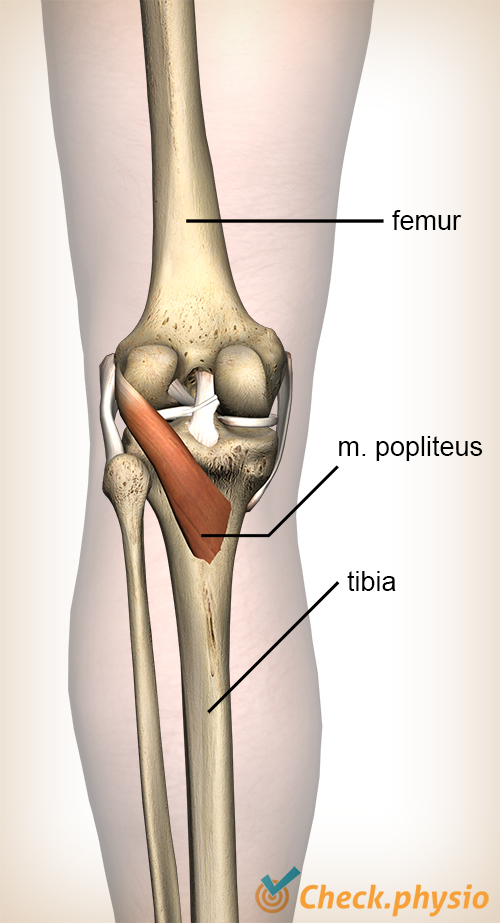- Conditions
- Popliteus tendinitis
Popliteus tendinitis Popliteus tendon tenosynovitis
Introduction
Description of condition
The popliteal tendon is inflamed. This tendon runs from the back of the knee to the outside of the knee.
Cause and history
Popliteal tendinitis can have several causes. The symptoms can be caused by excessive inward rotation of the feet (pronation), from running downhill or always running on the same side of a sloping road. These cause excessive strain and inflammation of the popliteal tendon.
Signs & symptoms
The pain is located at the back of the knee and along the outside of the knee. The symptoms occur mainly during (downhill) running.
Diagnosis
The doctor or physiotherapist will perform a physical examination to test whether the symptoms originate with the popliteus muscle. In addition, they will ask when and how the symptoms started. This may give a clear indication of the type of injury. An ultrasound scan may support the diagnosis.
The popliteus muscle supports the hamstring, so the entire leg will be examined during the physical examination. The patient's gait may also be analyzed to see if there is any sign of flat feet while walking. This may also reveal what the knee does when stability is required during walking. Excessive rotation of the lower leg in relation to the upper leg can overload the popliteus muscle.
Treatment and recovery
The treatment will initially consist of relative rest, which means that movements which cause pain should be avoided. This will be combined with exercises to strengthen the right muscles in and around the back of the knee.
The lower back, hip and foot muscles are also trained to provide as much stability to the knee as possible. In addition, a hardened popliteus can be massaged to help it relax, and stretching and mobilization of the knee joint may help.
If the examination has shown that the position of the foot could be a cause, a shoe insert may also be recommended. This is often done in consultation with a podiatrist.
Exercises
The exercise program for popliteal tendinitis will include the right exercises to reduce the popliteal pain. You can find the exercise program here.
More info
You can check your symptoms using the online physiotherapy check or make an appointment with a physiotherapy practice in your locality.


